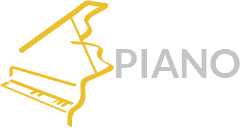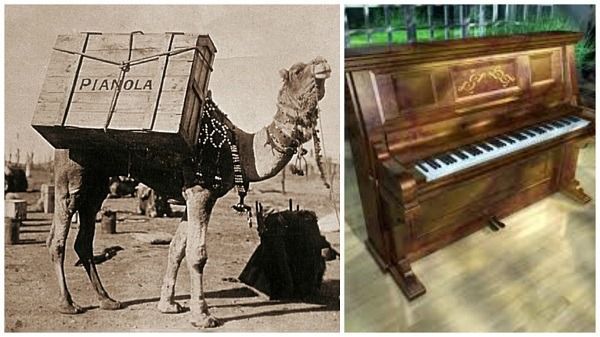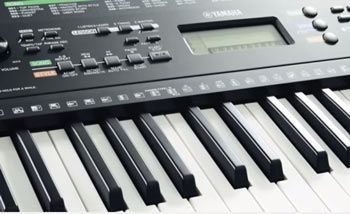- Home
- Author's Archive:
A funny journey back to the origin and history of the piano. Who invented the piano?
We supossed you’re here because you want to deepen in the history and origin of this instrument that today has a great importance.
The inventor of the original piano mechanism is attributed to the Italian Bartolomeo Cristofori. Although curiously despite being its Italian inventor this country turned its back on this instrument for quite some time. Its main development is in Germany, so it is in that country where the Piano or Pianoforte is developed.
In Italian piano is slow or loose and forte is strong. That’s why the piano has the ability to sound louder or looser based on the force with which you press the key is also called PianoForte.
I’m sure you’ll be interested in…
- Ranking with the best digital pianos in quality-price ratio
- The cheapest musical keyboards for beginners
- Learn piano by yourself and for free
Before the piano, there were some keys instruments very popular like the Harpsichord, but they didn’t have the main characteristic of the piano. Which was to be able to regulate the volume of the note depending on how strong or weak the key was pressed. In this way the piano changed the way it even played the music.
Well, we’re lying to you, the Harpsichord did allow you to regulate the volume and add expressiveness to what you were playing, but it had very little power and volume. So it didn’t work for the new kind of music that was being created. Much more expressive and sentimental.
And what year was the piano invented?
Bartolomeo Cristofori began to make his invention back in 1698, almost three hundred years ago. Although it wasn’t the piano as we know it now, it had about 4 octaves and no pedals to maintain the note. And since then, the hammer action system has been improved.
You want to know what the harpsichord sounded like? It was the most popular instrument when the piano was created, and it still took a long time for the piano to surpass it in popularity.
The Harpsichord
And how was the piano becoming so popular?
How we really named the piano before began to develop in Germany, and at first it was ignored in Italy. It was a somewhat eccentric character called Gottfried Silbermann who built the piano in Germany.
Silberman was a renowned harpsichord maker, but he was also a very joking and risk-taker. On one occasion he had to leave Freiburg at full speed because he had tried to kidnap a nun in a very shabby way and had to go into hiding in Strasbourg. He was a very skillful person for business but his taste for the opposite sex got him into a lot of trouble, in a few words, musicians…..
Silberman heard about Cristofori’s system and built one of the first pianos that existed. Some of them belonged to Frederick the Great himself. The same Johann Sebastian Bach came to try the invention but curiously he did not like it much at first but then gave his approval years later.
Even so, the piano took a long time to prevail over other keyboard instruments, but it was because baroque music was still dominated by polyphony and counterpoint.
Silberman’s piano was later developed in England by other manufacturers who reduced the size of the instrument and simplified the mechanism so that it became affordable for the middle classes. This greatly influenced its development and extended its use and popularity.
The great piano players
As the piano gained popularity at the end of the Baroque and the beginning of Romanticism, the great composers began to compose for this powerful and expressive instrument. In history, J.S. Bach and Dussek stand out as pioneers, but Mozart is the first of the greats. There is also talk of Clementi as one of the creators of the new way of playing and the piano.
Mozart discovered in the piano how to express feelings with volume changes. Creating a world of incomparable beauty, but it was Beethoven who transgressed everything. Beethoven played in a way never before seen, wild. You could say it was Jimmy Hendrix’s version of his time, a real rockstar. It was very normal that he would destroy the keyboards with his energetic way of playing.
Of course, very important figures would arrive later and each one of them contributed their stamp on the music composed for piano. Artists such as Joseph Haydn, Schubert. Basically they were closing the Baroque and opened the door to a new music with a much more singable melody. And there were also singers in their evenings…
AND SUDDENLY THE PIANO BECOMES THE MOST POPULAR INSTRUMENT DURING THE 19TH CENTURY.
Throughout the nineteenth century the piano became popular to incredible levels. The middle classes are beginning to acquire them and all over the world there is no house that does not have a piano in its living room. Of course, all this is helped by the fact that much cheaper and less space-consuming models such as upright pianos emerge. Which has the whole mechanism mounted in the vertical plane. To make them sound louder, the top cover is opened.
We have to keep in mind that these times there was no television, no consoles, no radio. The piano became the center of meetings. It kept people entertained and was wonderful because it prevented arguments about politics from ending up with a tray on someone’s head. This highlights the importance of the piano as a social element.
It is said that in the mid-19th century alone in Paris there were more than 15,000 piano teachers. Brands like Steinway export their pianos halfway around the world and in this way we can see scenes of camels transporting them.
We can say that the 19th century is the golden age of the piano. In all styles it was the most played instrument. El Vals, popular music of all kinds… not to mention his role in military music. Very popular this style during the nineteenth century, whose function was to give glory to the military campaigns and increase the morale of the population. In some cases the notes could imitate elements of the war, such as cannon fire.
Schubert for example composed military music, here a sample.
Schubert Military music nº 1 Op 51
And in the wild west it also becomes very popular, there was always a piano in the typical cowboy bar. Which will then be the soundtrack of this genre. This was already at the end of the 19th century.
20th Century: Jazz and Swing
Like the 20th century, the piano is still at its peak. Especially at the beginning of the 20th century, there’s no bar or house without a piano. However, new styles of music are beginning that are still very much alive today. These are Swing and Jazz.
We can say that Swing is a type of Jazz, but it is also related to the style of dance that became so popular in the United States during the first half of the 20th century.
The piano begins in this time to share starring with the guitar as the main harmonic instrument, but it still shines by itself. In addition, the piano is usually the reference instrument for composition and learning harmony because it is much more visual in that sense.
It is true that all kinds of piano music are still being composed during the 20th century but we cannot avoid highlighting Jazz and the introduction of modern harmony. This change is so great that today there are conservatories of “Classic” and others of “Modern”Music. This is due to the introduction of modern harmony, which is developed and created as the geniuses of Jazz of the 20th century emerge. The rules of classical harmony are broken, creating new rules and playing with dissonances.
Some names that change the rules of music are Bill Evans, Duke Ellington, Thelonious Monk
The 70’s and the arrival of the digital piano and synthesizers
In the ’70s comes something that will revolutionize music. This is synthesizers and piano keyboards. By means of digital technology it is possible to produce sounds from scratch and to modify their waves. This opens up an incredible number of possibilities for musicians. It’s the beginning of electronic music and those keyboard players surrounded by synth keyboards everywhere. An example of this new world is Herbie Hancock.
Herbie Hancock is one of the best examples of innovative pianist. Great Jazz musician does not hesitate to experiment with new technologies and becomes a great fan of synthesizers and disco music. Next we leave you a video where you can see the jump of planet that some keyboardists give.
Well, this post is coming to an end, obviously we have left many things but we hope to have entertained you and have given you an overview of the history and evolution of this wonderful instrument. If you liked this article and you think someone might like it, don’t hesitate to share it.
Vote if you liked this article 🙂
Top 7 Best Cheap Digital Piano In 2021 Reviews【2020】
In this section we will make an analysis of the cheapest electronic keyboards but with a basic and acceptable quality. Keep in mind that we are talking about musical keyboards for beginners.
| Model |
Link |
|---|---|
|
Yamaha PSR E363 (old E353) Velocity Sensitivity keyboard Sustain Pedal |
Check Thomann Bundles: |
|
Casio CT S300 (Old 3500) Velocity Sensitivity keyboard Sustain Pedal
|
Check Thomann:
|
|
Yamaha PSR E263 (old E253) NOT Velocity Sensitivity keyboard Sustain Pedal |
|
|
Yamaha YPT 260 (old 255) NOT Velocity Sensitivity keyboard Sustain Pedal |
Although these keyboards don’t have to be thrown away later, they are very useful because they are very light.
Although in the future you should study with other models, you can use them to take them to music sessions as they usually weigh 4 kg, at most – compared to the 12 kg of other digital pianos. You can then use them to connect them to your computer as MIDI controllers as well.
If you are thinking about learning to play the piano and you want a piano that will suit you for the first 5 or 7 years, check out the guide with the best digital piano of the season; in it you have digital pianos with weighted keys for even less than 400 euros such as the Yamaha P45 or the Casio CDP S100.
The musical keyboards in this selection can be used perfectly to see if you like to play the piano and experience the sensations of playing a musical instrument.
It’s not a bad strategy to acquire one of these keyboards and later buy a better one. Well, having said that, here we go with our selection: There are several brands, but without any the ones that stand out are usually CASIO, or YAMAHA. Although as you will see there are other very acceptable options.
YAMAHA PSR E363 (old E353)
I’m sure you’ll be interested in…
- See this section for possible discounts and offers
- Ranking with the best digital pianos in quality-price ratio
- The cheapest musical keyboards for beginners
- Learn piano by yourself and for free
This is our favorite. It is difficult to find something so balanced for a budget between 100 and 200 €. It has velocity sensitivity (without Hammer Action, also called weighted keys), sustain pedal input, USB MIDI for MIDI controller and 61 keys. And like other PSR it weighs only 4 kg. It’s got it all.
The Yamaha PSR E353 had a maximum polyphony of 32 notes that was a little short but the new Yamaha PSR E363 already has 48 notes. Which puts it on a par with his competitor. The Casio CTK 3500.
Of course it’s a bit more expensive than the Yamaha PSR 253 mentioned below, but the difference is very small and the USB MIDI connection is worth it.
It will help us to record MIDI track in the computer and then export them to score with programs such as CUBASE, Ableton, Sibelius and so forth. If you have the money, don’t hesitate to buy this or the following Casio that we talk about below.
It has demo songs at home and acceptable loudspeakers.
Here you have our in-depth analysis of the Yamaha PSR E363 and its previous version, the Yamaha PSR E353.
Below the shops you can Buy it:
CASIO CT S300 (Old CTK 3500)
This keyboard is the one we recommend the most together with the Yamaha PSR E363. They are tough competitors and many people do not know which to decide on. The Casio CTK CTS 3300 is the new model of the Casio CTK 3500.
This keyboard has 61 sensitive keys, it supports a sustain pedal that serves to sustain the note in time even when the key is released, and it only weighs 3.4 kg. It has 48 note polyphony which is quite good for its price and is a very important aspect of piano sound quality. It has many sounds available (more than 400) although the important thing is that it has an acceptable piano sound quality. It includes MIDI to connect it to the computer like the Yamaha PSR E363 and equals it in all other functions.
Buy the Yamaha PSR E363 or Casio CT S300 both are good choices for a similar price. If you want to know more do not hesitate to visit our review about the Casio CT S300.
Watch following video with the characteristics of the Casio CT S300.
Below the shops you can Buy it:
Yamaha PSR E263 (old Yamaha PSR E253)
Attention to this one that although it surpasses the 100 € it is that it has almost everything for that price.
What we love about it is that it’s got a pedal input. Apart from that, the Yamaha brand is very powerful, as we have already said, it has 61 keys and a weight of 4 kg that is more than acceptable. It’s a very attractive offer and its sound like piano is not bad at all.
Yamaha YPT 260 (old Yamaha YPT 255)
We like this Yamaha model very much and we’ll tell you why. It’s still very affordable as it’s barely over €100 and it also supports a pedal.
The pedal is important when playing a song on piano because it allows to keep the note in time. Otherwise it has Yamaha quality, which is a guarantee that you will have the best quality that can be given for that price.
It also has many self-learning functions. And because it supports the pedal, you will have more time for higher levels of learning without having to buy a higher range; the best choice if you can afford it. Well, it’ll last you longer. In addition the charger is included although the bad thing is that it does not have USB-MIDI port. Only headphones output that you can use to record but not for the piano to be understood with learning software. Below we also show you which pedal is compatible with this keyboard.
If you liked this information and found it useful, don’t forget to share it on social networks. Thank you very much for reading it!
Vote if you liked this article 🙂






